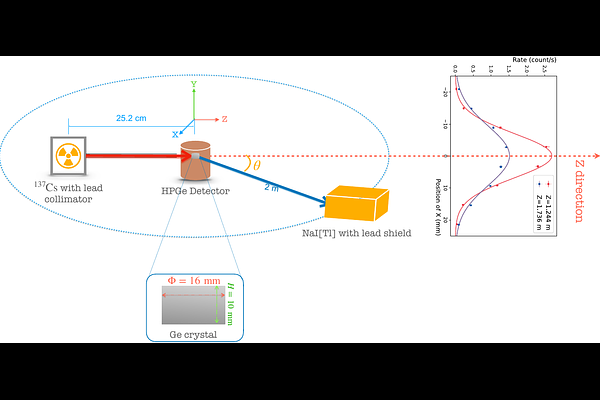Germanium Atomic Compton Scattering Measurements and ${ab}$ ${initio}$ Many-Body Calculations: Implications for Electronic recoil Dark Matter Detection

Germanium Atomic Compton Scattering Measurements and ${ab}$ ${initio}$ Many-Body Calculations: Implications for Electronic recoil Dark Matter Detection
Chang-Hao Fang, Yi-Ke Shu, Shin-Ted Lin, Shu-Kui Liu, Hao-Yang Xing, Jing-Jun Zhu, Hsin-Chang Chi, Muhammed Deniz, Hai-Tao Jia, Han-Yu Li, Qian-Yun Li, Ren-Ming-Jie Li, Yu Liu, Xiao-Yu Peng, Hao-Yu Shi, Qin Wang, Henry Tsz-King Wong, Yu-Lu Yan, Li-Tao Yang, Qian Yue
AbstractDiverse searches for direct dark matter (DM) in effective electromagnetic and leptophilic interactions resulting from new physics, as well as Weakly Interacting Massive Particles (WIMPs) with unconventional electronic recoils, are intensively pursued. Low-energy backgrounds from radioactive $\gamma$ rays via Compton scattering and photon coherent scattering are unavoidable in terrestrial detectors. The interpretation of dark matter experimental data is dependent on a better knowledge of the background in the low-energy region. We provide a 2.3% measurement of atomic Compton scattering in the low momentum transfer range of 180 eV/c to 25 keV/c, using a 10-g germanium detector bombarded by a $^{137}\mathrm{Cs}$ source with a 7.2 m-Curie radioactivity and the scatter photon collected by a cylindrical NaI[Tl] detector. The ability to detect Compton scattering's doubly differential cross section (DDCS) gives a special test for clearly identifying the kinematic restraints in atomic many-body systems, notably the Livermore model. Additionally, a low-energy-background comparison is made between coherent photon scattering and Compton scattering replacing the scattering function of ${GEANT4}$@software, which uses a completely relativistic impulse approximation (RIA) together with Multi-Configuration Dirac-Fock (MCDF) wavefunctions. For the purpose of investigating sub-GeV mass and electronic-recoil dark matter theories, signatures including low energy backgrounds via high energy $\gamma$ rays in germanium targets are discussed.